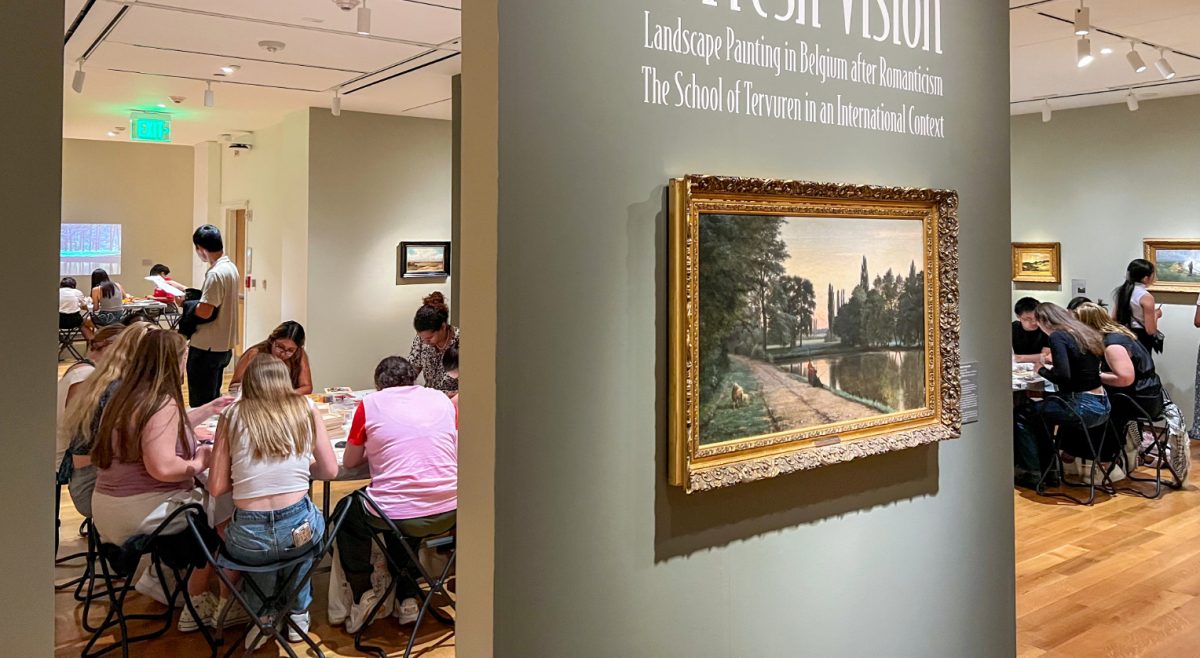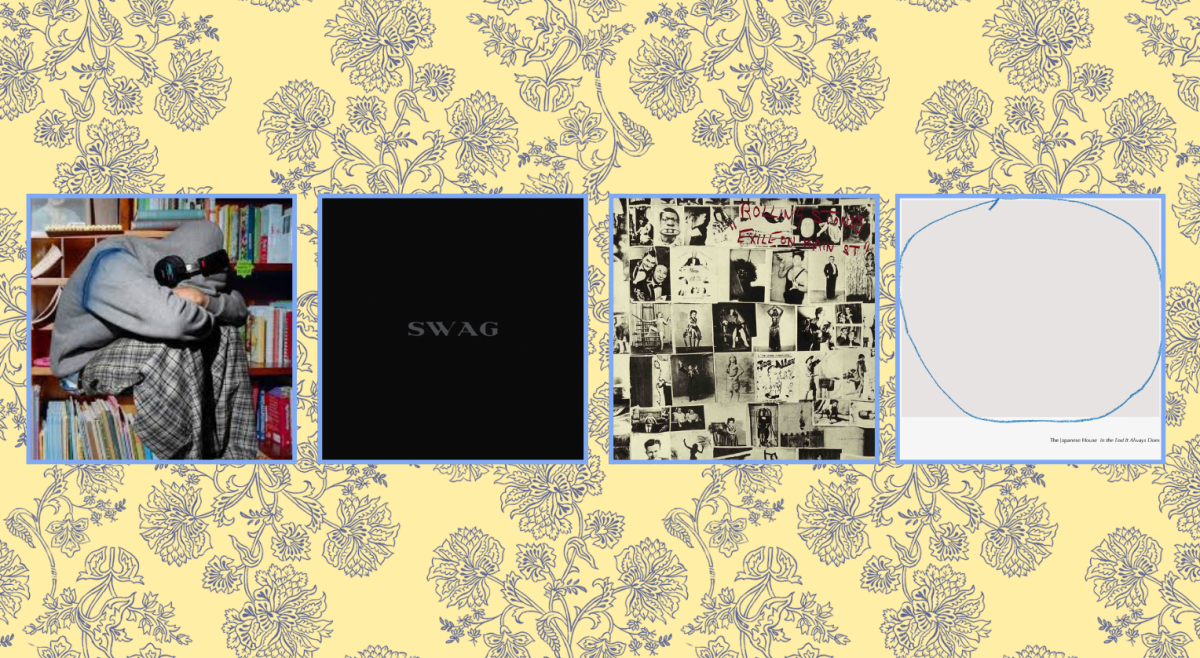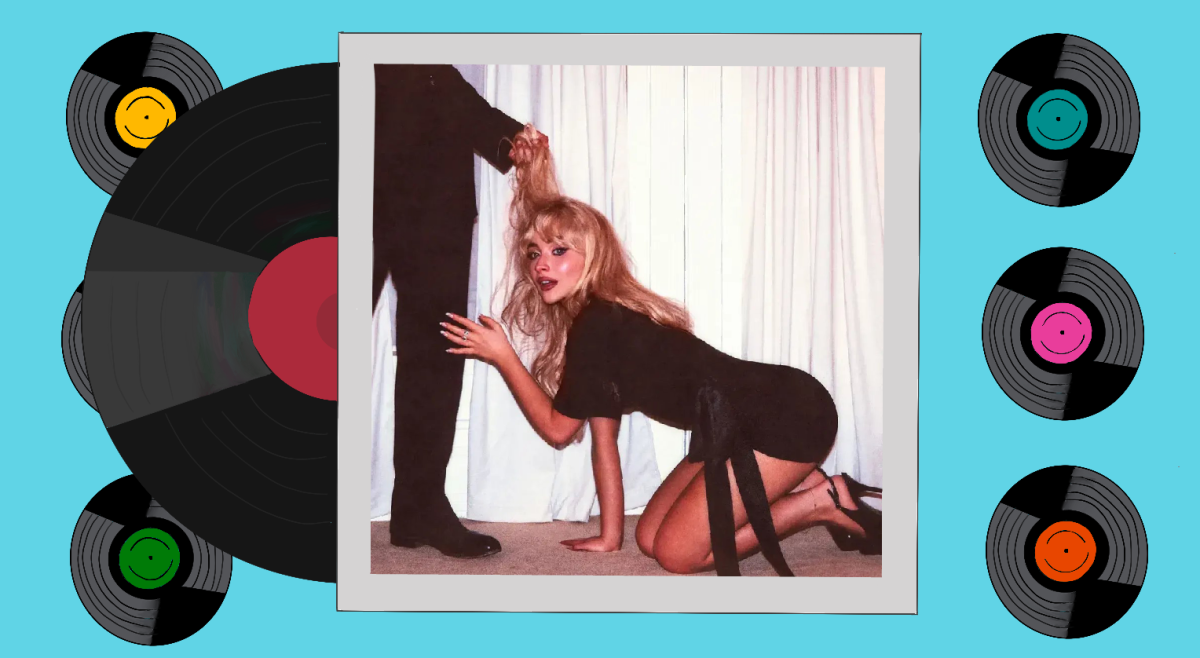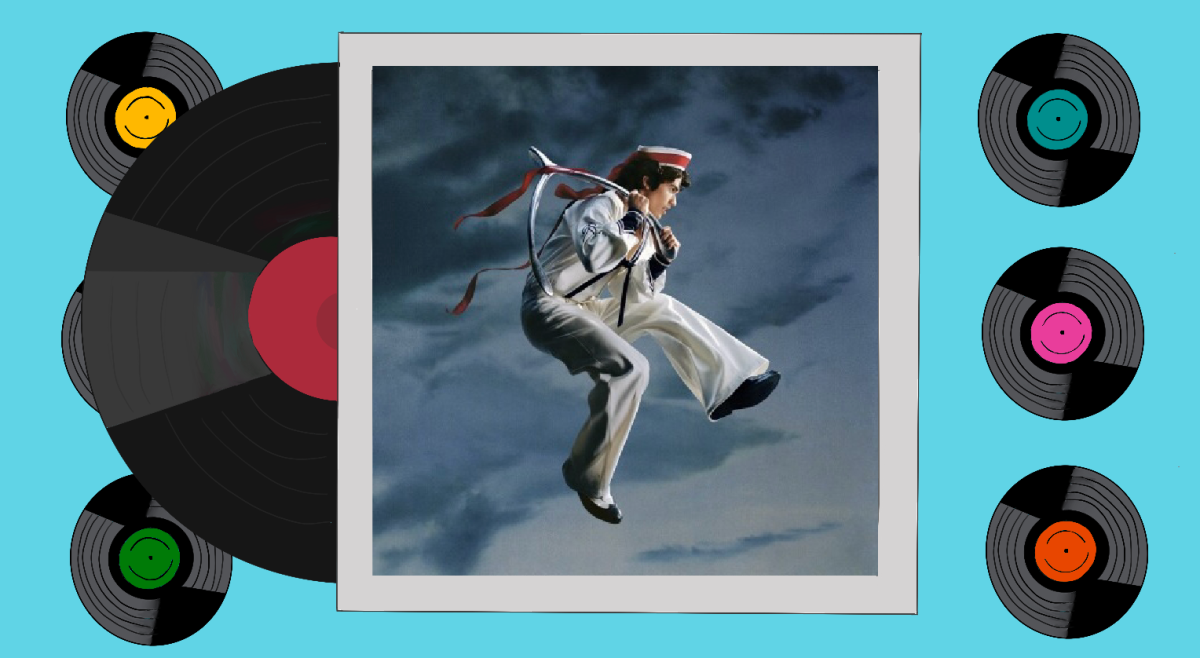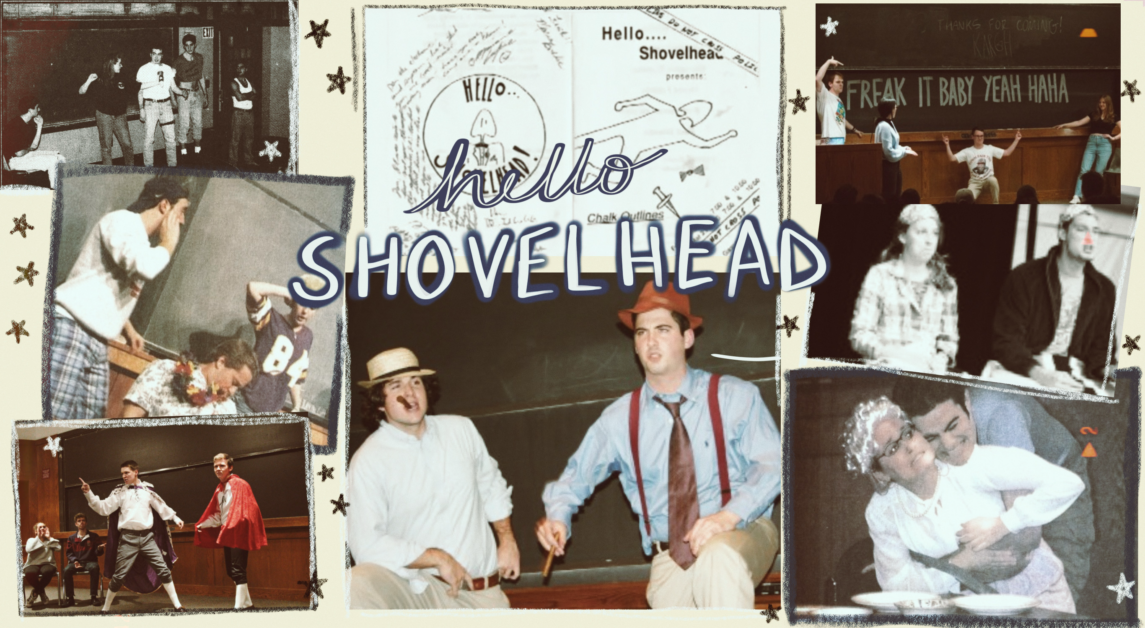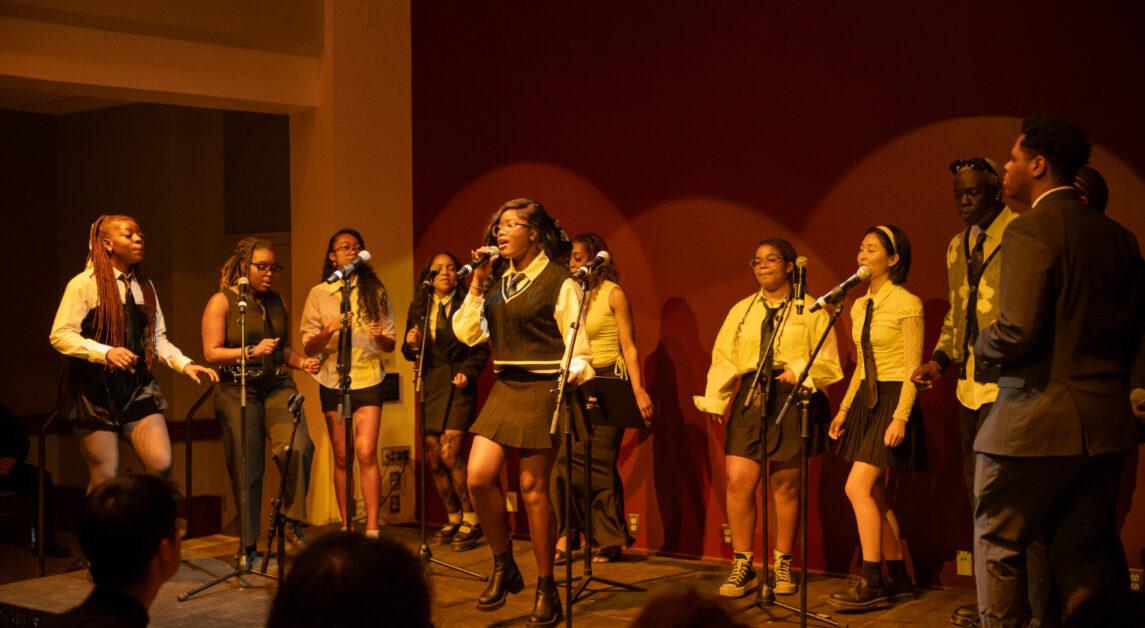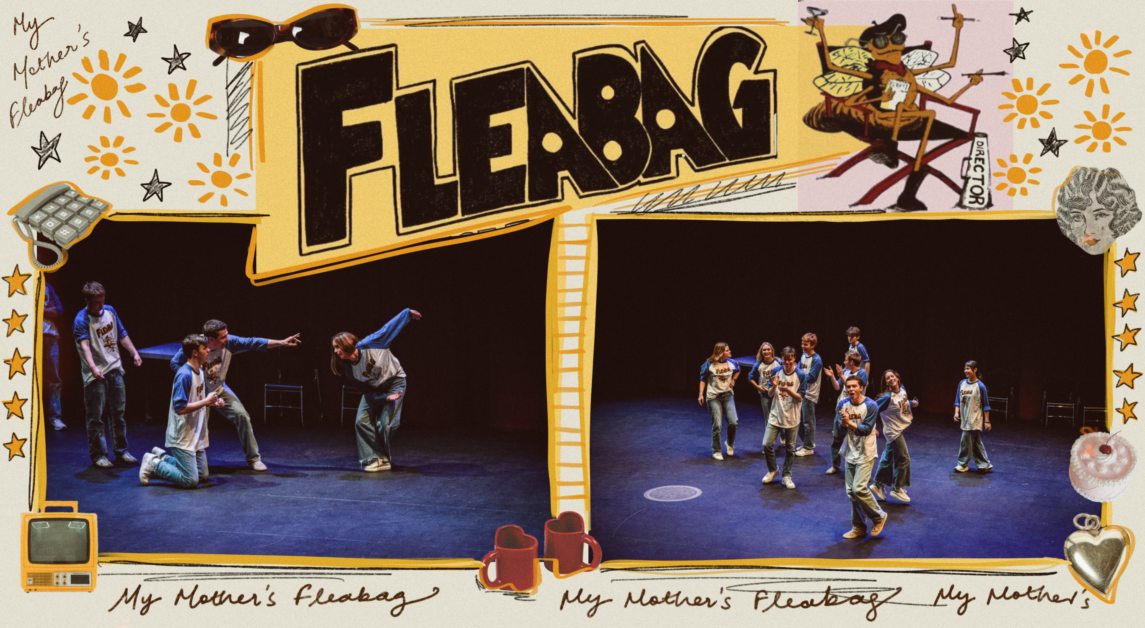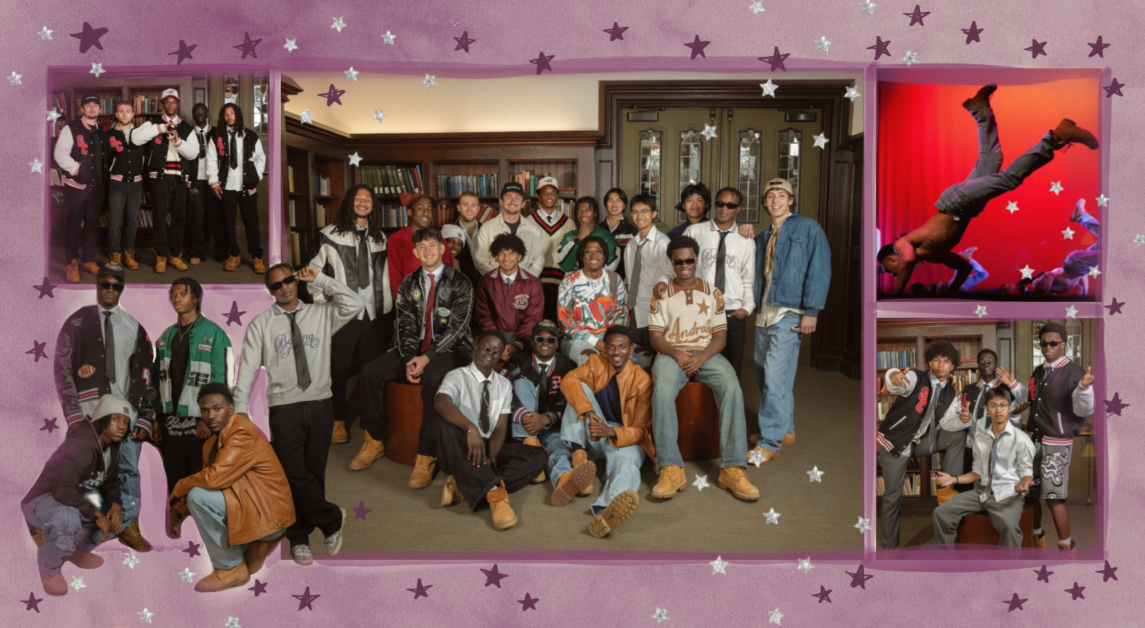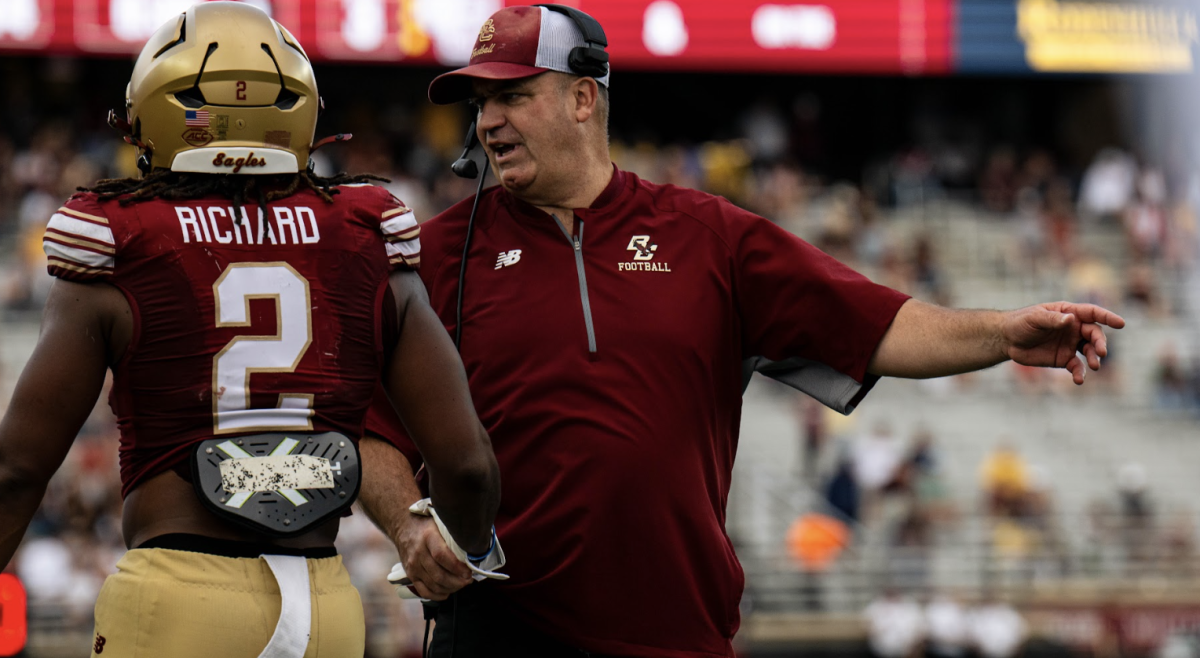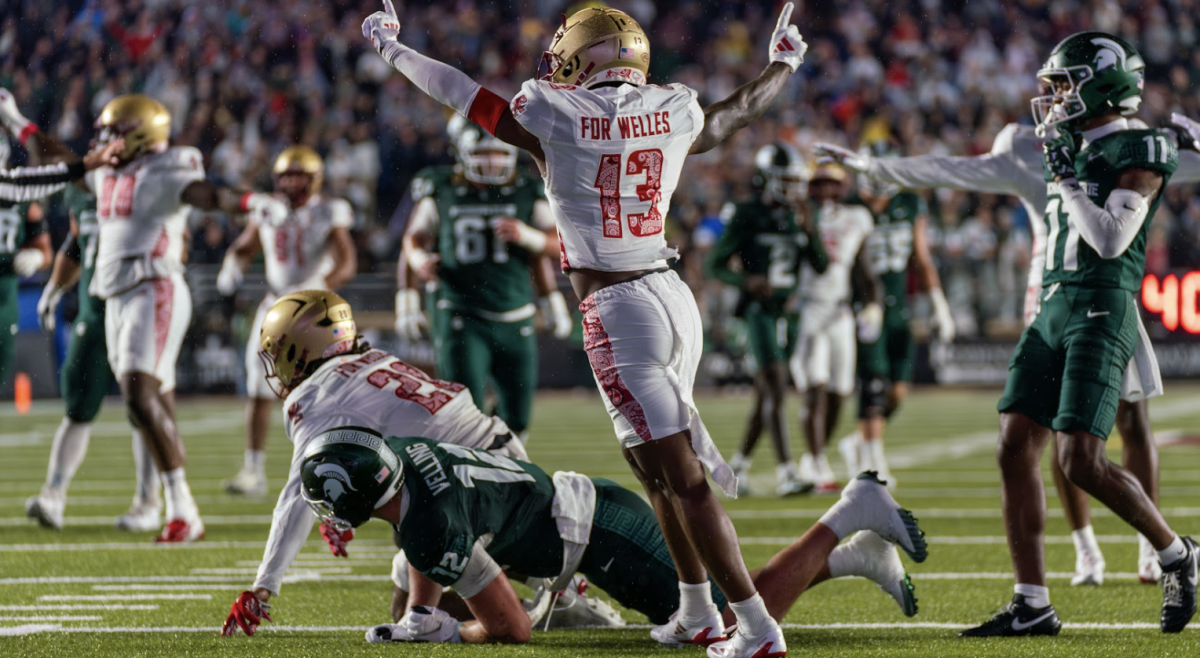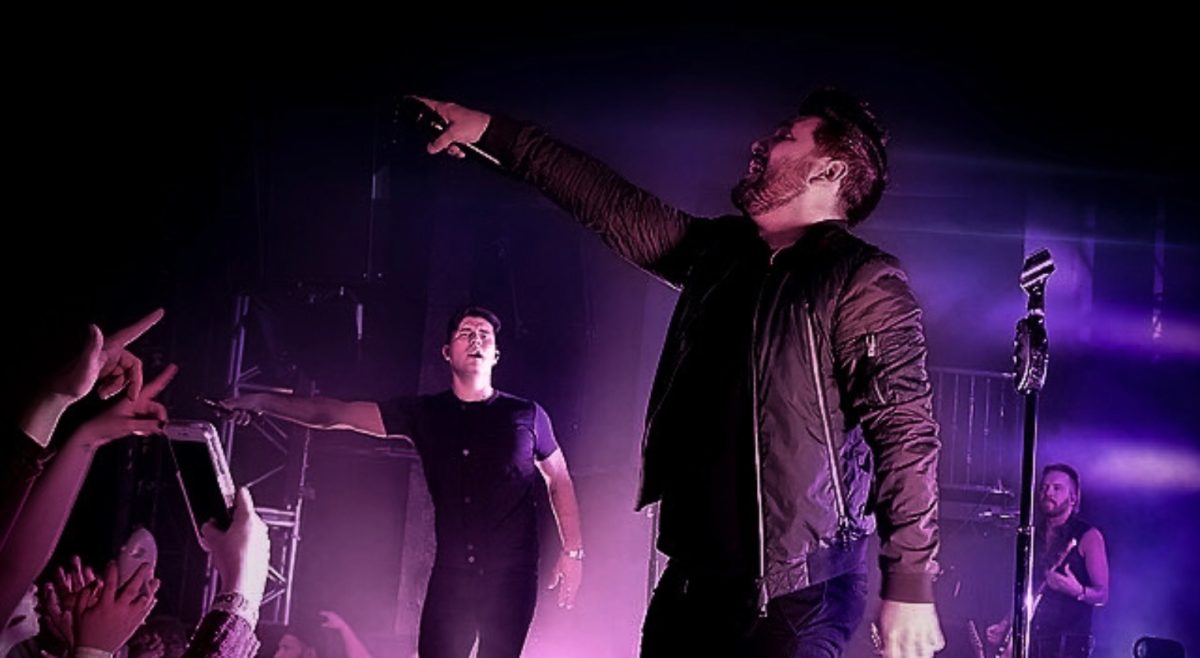One class is transforming James Joyce’s Ulysses into a virtual reality game. Here’s how.
Step into the square taped onto the carpet. Put the giant black eyepiece over your head and adjust the elastic straps until it fits snugly. In each hand, you hold a gaming device. Open your eyes. You’re in the Martello Tower in Dublin. The year is 1904. The day is June 16. And today, you are the closest you will ever be to being inside James Joyce’s Ulysses. Happy Bloomsday. Welcome to the world of virtual reality.
The blocky glasses aren’t comfortable, but you forget that soon enough, as you begin to explore the room around you. You’re in a small room. Behind you is a shelf with a mirror and a bottle of poison. To your right is a bright red ball.
“Go ahead, pick up the ball,” the helpful student volunteer says. Pivot. See the ball on your right side. Squeeze the button in your right hand, lean over—don’t fall—and pick up the ball. Once you’ve got it, keep your finger on the trigger, in a sense, and walk to the other side of the room, where you can put it down. But be careful. Walk too far in any direction and a ghostly grid will pop up to warn you to stop. Ignore that and you’ll smash into a very real, not-virtual, brick-and-mortar wall, and then, of course, the illusion will be completely shattered.
This is the very beginning of Joyce’s essential story, retold through a virtual reality game called Joycestick by the 20-odd students—undergraduates, graduates, and students from Berklee and Northeastern—in Joe Nugent’s Analyzing Joyce class. Nugent has been teaching Ulysses in a seminar-style class at Boston College for the past seven years. His first year, he imagined a time when he could make the world of Dublin as real as possible for his students. That year, the most they could do was trace the movement of the characters along a map. This year, he is leading a team that is turning Ulysses into a virtual reality video game. This project has no precedent—not at BC or any university or museum.
The class, in which Nugent takes a whole semester to teach Ulysses, has appeared in the course catalogue since its inception. Starting last spring, Nugent began to recruit students to join the class, through word of mouth and with challenging fliers posted around campus. In May, several of the students and Nugent held their first meeting to discuss the potentials of virtual reality and Joyce. The class received funding from an Advanced Technology Innovation Grant from the Academic Technology Advisory Board and a Teaching and Mentoring Grant from the Office of the Provost.
Right now, the game is set just in the Martello Tower, the setting for the first chapter of the book, but as the project continues into next semester, Nugent hopes to expand into a half-dozen locations with 100 objects. Each object will be tagged with a sound and lines from the book. Ideally, when you pick up the ball, it can explain its significance in the novel. The 100 objects will be tools to understanding and traversing Dublin in 1904. This summer, Nugent traveled to Dublin with two students in the class, Ryan Reede, MCAS ’16, and Liam Weir, MCAS ’17, to get a 3D map of the Martello Tower to create the most historically accurate game.
Nugent’s class has several familiar faces. There’s the editor-in-chief of Boston College’s satirical newspaper, The New England Classic. He’s scribbling on a white board labeled “game-i-fy.” The person behind one of BC’s most popular student Instagram accounts stares into his laptop. He’s on Photoshop, editing a photo of someone wearing the VR glasses. A former Heights photo editor sits with the development team in the back, whispering over lines of code. A campus musician, recognizable from the stage, is in front of a whiteboard with “soundtrack” written on it. With professor recommendations, Nugent handpicked the best of the best, he said, to complete this project. With these students, who encompass nearly a dozen majors and minors, Nugent believes that he can accomplish his original vision of recreating the world of Ulysses.
But he didn’t start out believing that the class could get this far.
“I had no notion that we were going to get to anywhere where we are,” he said. “If I had been asked, ‘Where is this going to go?’ I would have said that by the end of this semester we would have a vague sort of outline of a 3D thing with a few Joyceian things throughout it. But the enthusiasm of the students and determination and their inventiveness has been a huge surprise to me.”
The class debuted the first version of the game—known as MVP 1, or Minimum Viable Product—at a conference in Stokes South on Oct. 15 that brought together gaming and virtual reality experts from up and down the Eastern Coast. That product was still glitchy. Sounds didn’t line up exactly to objects and players could leave the environment the game is set in. But the class has time to fix those mistakes: On Nov. 12, it will debut MVP 2 at another conference.
The Monday after the conference, during Nugent’s class, students gather around a whiteboard to write out the most obvious problems in the demonstration. There’s the headphone quality. The general presentation isn’t very artful. Then, one student goes up and writes “literally everything” above all of the other notes. Another student chimes in: “I have a question about the first comment? It’s not very productive.”
Both students are right, sort of. The class is productive. The 20-odd students are split into six divisions: modeling, sound, text visualization, mapping, development, and gaming. There’s also an ad-hoc “gamification team” that hopes to define the specifics of the game of Joycestick, with members from all of the more formal teams. And so far, the class has done a lot—it has far outstripped any of Nugent’s expectations for this point in the semester. But it still has a lot of work to do. Beyond the technical work of identifying objects, creating a backing soundtrack, writing out descriptions, and pulling it all together with Unity, the gaming engine, the class faces the prospect of determining what, exactly, is the point of recreating the classic book in this way, and who the project is for.
Anthony Perasso, MCAS ’16, sees the game as a way to immerse readers in the story in a way that hasn’t been done with any novel before. He’s a member of the text visualization team—otherwise known as the English majors of the class. They are the ones who know the novel inside and out, helping free up the more technical teams to work on engineering the game. Perasso is also a member of the gamification team.
It’s difficult to reinterpret this piece of literature as a game, he said.
“One of the bigger challenges is not cheapening the work by making it Ulysses with neon lights,” he said. “At the end of the day it’s a crazy stream of consciousness.”
And it’s hard to make a stream-of-consciousness, 18-chapter, 650-page book into an accessible video game with a specific plot arc. Perasso hopes that they will be able to subvert that by making each chapter into a level in the game with a specific task like picking up one of the 100 objects or reading an advertisement for a product of the period.
To take the book and turn it into a game, everyone in the class does something different. Reede, the class TA, heads up the development team. This class is technically in the English department, so it’s unusual to see the row of computer science majors sitting in the back, hunched over laptops as Nugent moves excitedly in the front of class, the sleeves of his off-white shirt rolled up just above his wrists. Behind the dozen students underlining parts of the book, the developers are talking in low voices about code.
Technically, it could take fewer lines of code to create Joycestick than it would to do a single computer science assignment. But that code has to be tighter, Reede said. In a comp sci course, it’s okay if an assignment has a few bugs. In Joycestick, every possible situation has to be managed. So, though there may be less code, the architecture of the program must be developed more specifically.
“For a game, if you don’t manage every single case, then you’ll have users that end up outside the map or underneath the environment, which shouldn’t be the case,” he said. “So you could say, ‘Oh you need more code to fix that,’ but in reality you need less code.”
Even from the development perspective, and even if the code is perfectly written, Reede sees that what they are doing is in no way a substitute for the novel. But, he said, if the class manages to accomplish even a fraction of what they have planned, this project will be impactful. In MVP 1, players can leave the environment and journey across the mountains outside the room where the game takes place. Players aren’t necessarily meant to leave that room, but this possibility for exploration is what Reede thinks makes the game—and Ulysses—different for everyone.
“[Virtual reality] is very personal,” Reede said. “It has to be because there’s a f—ing screen an inch in front of your face. If it’s not personal, you’re doing something wrong. So it should be your experience with Ulysses.”
And that experience depends on a game that capitalizes on motion, image, and sound. The sound team creates a noise that’s associated with each object, like a bounce to go with the ball players can pick up. Within the sound team is the music team, which consists of two students from the Berklee School of Music. These students use a combination of recordings—a friend of theirs from Berklee played the chords and a melody on the piano for them from the Vienna Symphonic Library to create a background score for the game.
Elia Bishara, a senior at Berklee who’s part of the music team, noted that Joyce doesn’t hand the reader everything in a simple way. Instead, it’s the responsibility of the reader to really parse the text and get to know the characters. In order to create appropriate music and sound effects for the game, the team has to get inside the heads of the characters.
“We have an opportunity to think not just evocatively, but also think symbolically and historically,” Bishara said. “We don’t want to get too far from being emotionally driven and evocative, but it’s a nice opportunity to be a little more intellectual.”
The two Berklee students are hoping to push themselves with the music. But, Bishara said, the whole idea with the project is to bring the book to life. So, their experimentation is necessarily limited. Bishara’s musical decisions are inspired by the book, like the arrangement they did of “Love’s Old Sweet Song,” a melancholy song that’s a motif in Ulysses.
When Nugent first started teaching the class seven years ago, he divided his students into five groups, one for each of the senses. The students were then required to go through the class and pick out places in the novel where the senses were being affected. In a sense, his class this year is doing something similar. The sound team picks up on hearing, the modeling team is vision. The students in the text team pick objects players can virtually touch. Development and gaming bring everything together into a single project. And gamification, then, is the sense of consciousness. That team gives the game a purpose.
Nugent speaks in an Irish lilt. When he says Ulysses, as he’s bound to several times each class, he emphasizes the first syllable and draws out the last. He reads Joyce out loud more closely to the way Joyce would have read it than does anyone else at the University, with an accent that evokes the emerald-green hills, gray-white skies, and stone towers of Joyce’s Dublin. In class, he repeats the phrase “going forward” with increasing urgency, in what seems like a nod to his hope that the game will be done by June 16, 2017, at which point they would ideally present it in Dublin.
Maybe that’s the point. With virtual reality, and gamification, the class parallels the essential message in Joyce’s stream of consciousness. Last Monday, Nugent taught Chapter 17, “Ithaca,” in which the two main characters are chatting with each other in the style of Catholic catechism.
“What Joyce is telling us is this: if you want to look at the modern world, you have to look at it from several viewpoints,” Nugent said in class about that chapter.
And so perhaps what Joycestick is doing is this: if you want to understand Ulysses and understand James Joyce, you have to look at it from inside the game.
Featured Image by Abby Paulson / Heights Editor

